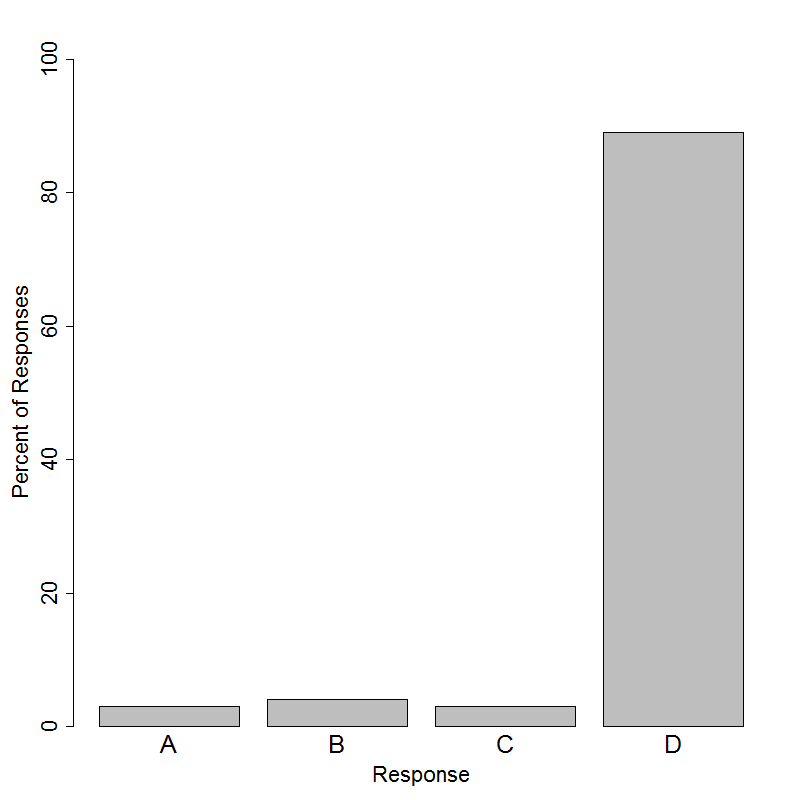A study reported that boys between the ages of 9 and 13 consume an average of 2000 calories each day. Which of the following is an appropriate interpretation?
(A) Each boy consumed exactly 2000 calories a day.
(B) Exactly half of the boys consumed less than 2000 calories and exactly half of the boys consumed more than 2000 calories.
(C) No boy consumed more than 2000 calories.
(D) Some boys consumed more than 2000 calories and some boys consumed less.





Although this question refers to a measure of center, it also assesses students’ understanding of variability. A measure of center – like an average – provides a single number summary of a data set, but the actual data values vary around that measure of center. The GAISE framework and the CCSSM expect students to consider both center and spread as important features of a data distribution.
In this question, option (D) correctly recognizes that the boys’ consumption of calories varies around the average of 2000 calories per day, with some consuming more and some less. The other answer choices reflect critical misunderstandings. Option (A) supposes that the data do not vary, and all boys consumed exactly the same number of calories. Option (B) assumes some kind of symmetry, but there is no guarantee that the average will divide the data points exactly in half. Even the median – a measure of center located at a point where approximately half of the data point lie to each side – may not be well-described by option (B) since some boys may consume exactly 2000 calories a day. Option (C) interprets the average as meaning the maximum data value.